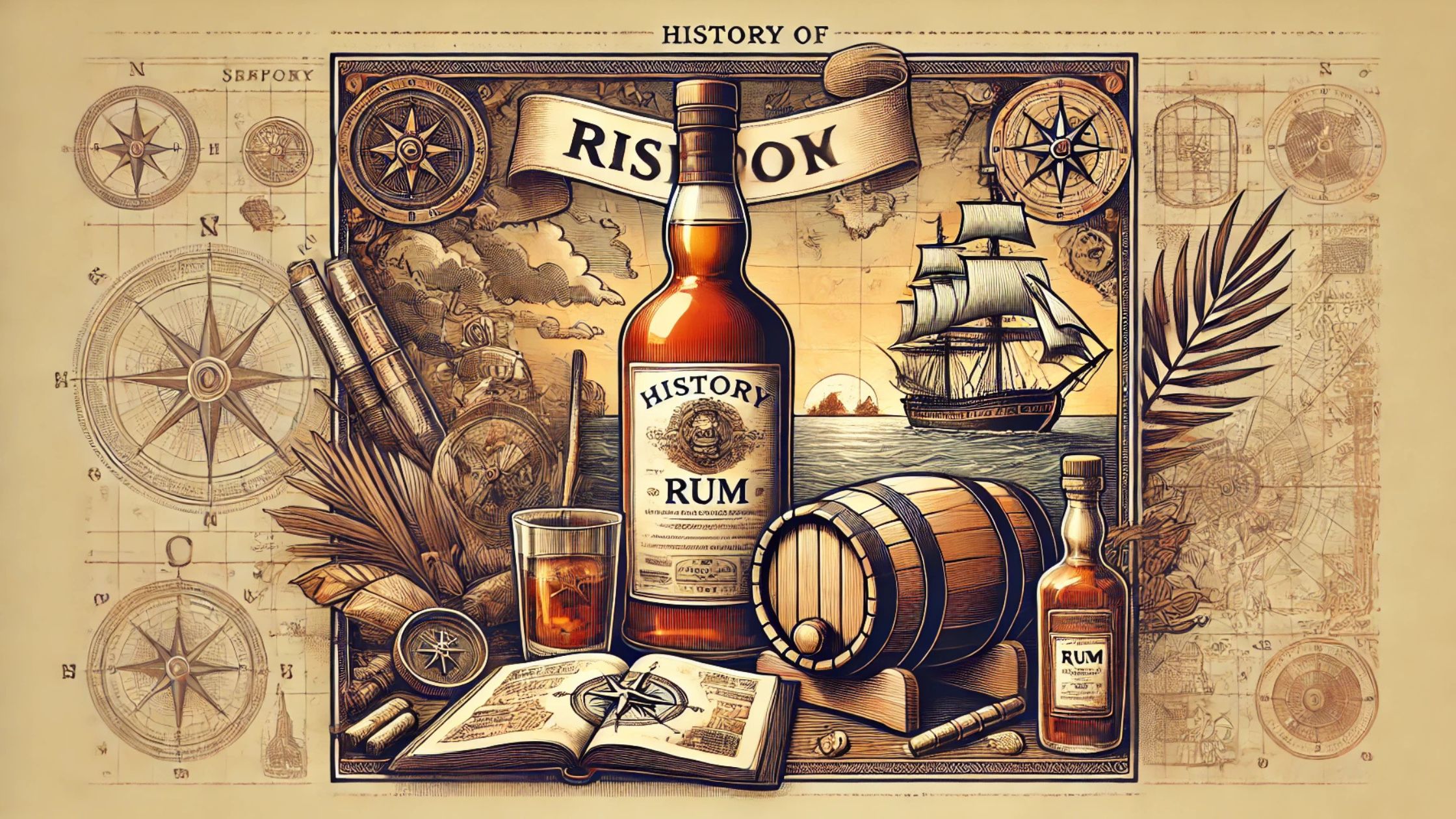History of Whisky: From Monastic Roots to Global Fame
2025-06-03


It is one among the highly celebrated spirits in the world that is known to be very versatile in terms of cocktails and has the richest historic past. The fascinating story of rum is one of becoming a rudimentary beverage in innovation, culture, and resilience to being cherished worldwide. Let's dig into the origins of rum by bringing out four important historical facts that have made a landmark in its amazing history.
Rum has a history that started in the Caribbean, a region known for its abundance of sugarcane. During the 17th century, enslaved people working on sugar plantations discovered that fermenting molasses, a byproduct of processing sugar, could lead to the creation of a new substance—what we now know as rum. This marked a pivotal moment in the origins of rum, intertwining its story with the culture and history of the region.
Firstly cited in history around 1650, rum was reported to have been produced in Barbados, where it went by the name "blood devil" or "rumbullion"—a term bearing connotations of a fiery drink. By 1667, the term "rum" had gained widespread usage, becoming a symbol of the Caribbean’s cultural identity. This early chapter in the history of rum illustrates how quickly it became a staple in the region and an important export, initiating the global trade in rum.
Today, the origins of rum remain deeply rooted in Caribbean culture, continuing to be a source of pride for the region. This connection highlights not only its historical significance but also the enduring legacy of rum as a cherished spirit across the world.
The transatlantic slave trade would probably be one of the most important, and perhaps one of the gloomiest, historical strands connecting with rum. The triangular trade cycle in the 18th century is legendarily said to have involved rum for the Americas. Ships carried molasses from the Caribbean to New England, where it was made into rum.
In turn, it was transported to Africa and exchanged there for people enslaved to be brought to the Americas and worked in sugarcane plantations. So kept going the cycle of molasses and rum.
While that dark chapter does remain forever a part of the very origins of rum, the spirit has evolved into something beyond that, into that pride in culture and craftsmanship, at least in the Caribbean, where it still figures into local identity. The history of rum would allow one to understand how it came about, also a drink that today brings many cultures together.
Long ago, before rum earned the nickname and became a household name, a very similar drink that was called "wine sugar" was drunk in the 14th century. This old type of drink is quite primitive and worlds away from refined rums known today. The real transformation in rum came about when distillation was being invented, concentrating the alcohol to make it a smoother drink.
By the close of the 19th century, minors started appearing with a product lighter than rum from countries like Puerto Rico and the Virgin Islands. Spiced rum did not enter the palms of intoxicated fondlers until 1984 when Captain Morgan was introduced to the drinking public. The introduction of Captain Morgan was a new direction for rum, making evident its flexibility to modernize taste without letting go of tradition. Evidence of such development in the heritage of rum is that it has sustenance of a long-lasting appeal and versatility.
Different types of rums are what make rum production delightful nowadays. The most common of all these are white rum and dark rum.
This is raw rum, which is minimally aged or not aged at all, also called light or silver rum. It has a subtle flavor and is used for mixed drinks such as mojitos and daiquiris.
This is aged longer in charred barrels and gives it a darker color and fuller, stronger flavor. It is usually served neat and in cocktails such as the Dark'n'Stormy.
All these variations in processes and production of rum validate its experimental and innovative course from the 17th century up to the present. As exciting as the flavors of rum are, its history is just as varied, making the subject worth enjoying for enthusiasts and historians alike.
Starting from its humble roots as a drink produced from sugarcane on plantations, rum's historical journey now serves as a testament to man's resourcefulness and cultural interchange. The jubilant and tragic histories of rum have traced its different journeys. Therefore, rum is a subject of profoundly historical import.
Rum is a banner of today, and distilleries all over the world are distilling wonderful celebratory expressions made in homage to the Caribbean. It may be a glass of dark aged rum or a refreshing cocktail conjuring the mental image of sun-drenched beaches that binds the two of you side by side with a tradition forged over millennia. The history of rum connects past to present because it still holds much promise for both inspiration and profit.
In the history of rum, it symbolizes a combination of endurance and adaptability. From time to time, we discover a new flavor or tale, most often because it is found in yet another place where cultures collide and shape it even further.